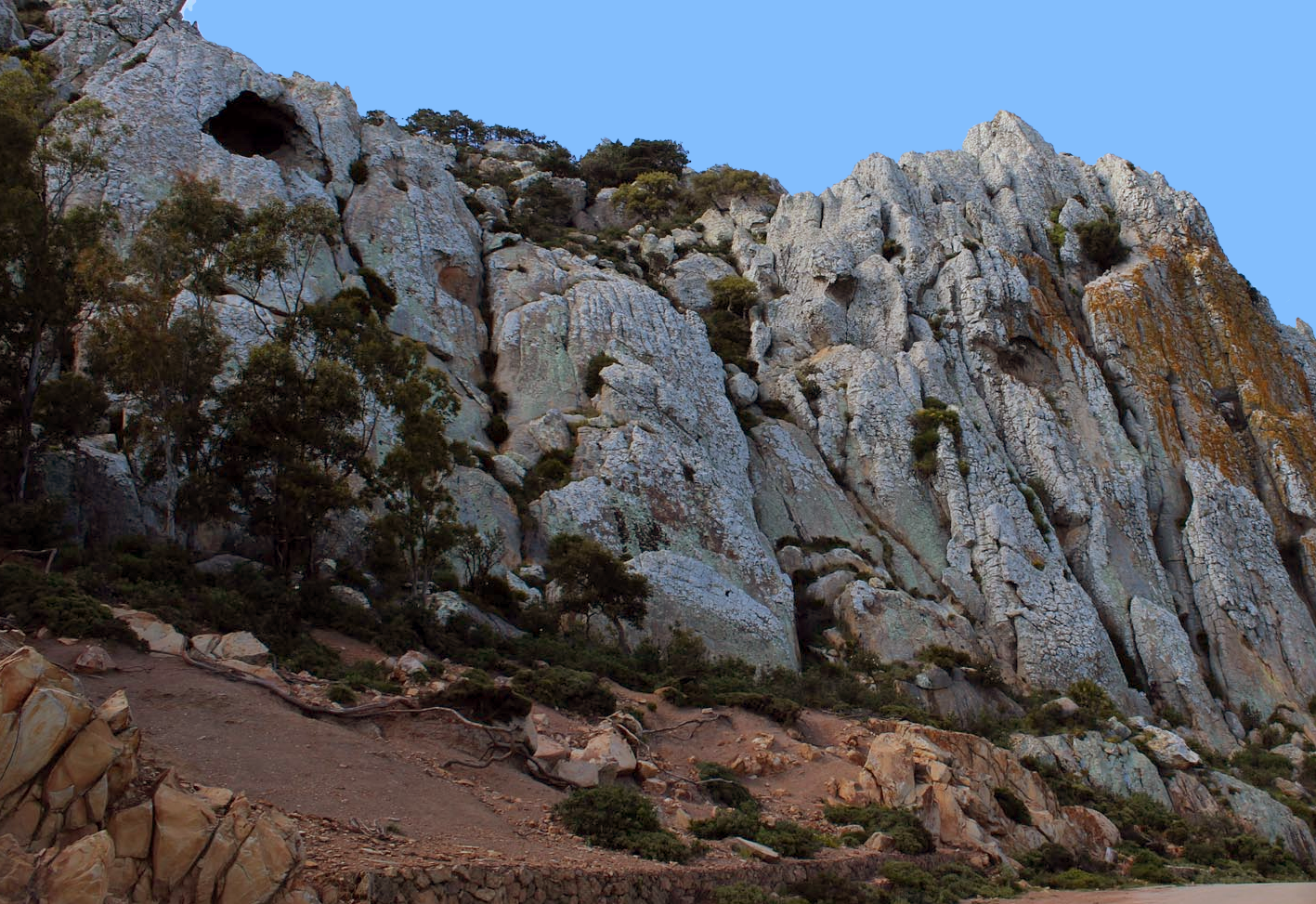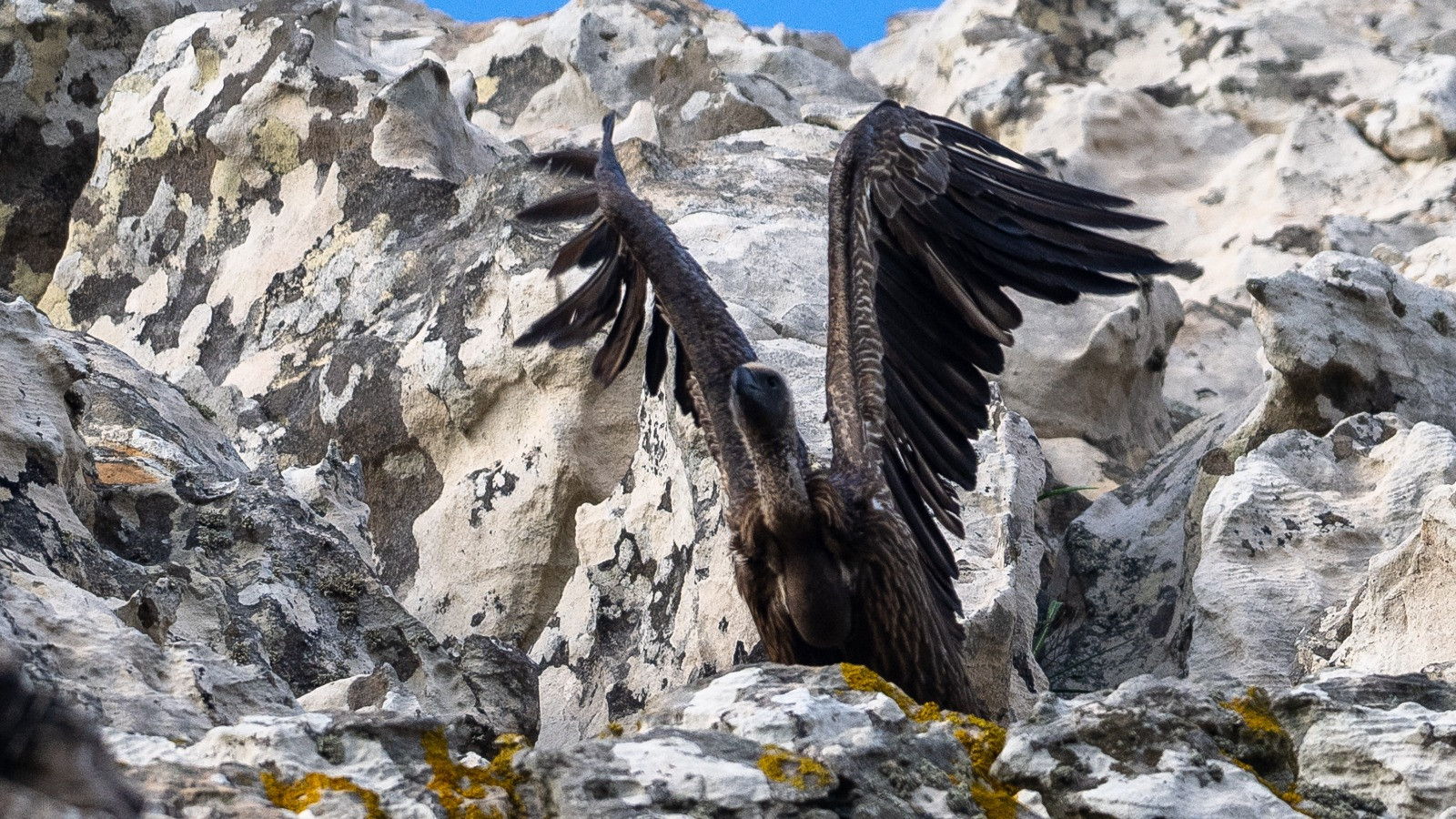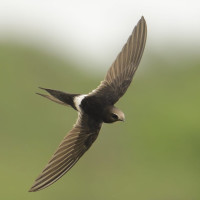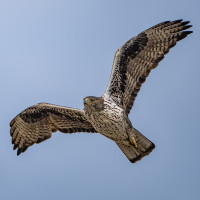Descrição
Puerto de Bolonia, the name given to point where the road to El Lentiscal (aka Playa de Bolonia) crosses a ridge running between the Sierra de la Plata and the craggy mass of Sierra San Bartolo. In easterly winds it's a superb place to watch migrating raptors and storks: Cegonha-branca – Spring Feb-April (peaks early March): Autumn July – Sept (peak late August) Cegonha-preta – Spring Feb-April (peak late March): Autumn Sept-Oct (p eak late Sept) Bútio-vespeiro : Spring Late April – May (peak Early May); Autumn August-Sept (peak Early Sept) Milhafre-preto : Spring Feb - April (peak March); Autumn July – Sept (peak early August) Abutre do Egipto : Spring Feb – May (peak late March); Autumn Aug – Sept (peak early Sept) Grifo-comum : Spring Feb – June (peak early May); Autumn – Sept – Oct (peak early Nov) Águia-cobreira : Spring Feb – May (peak early March); Autumn – Sept – Oct (peak late Sept) Águia-calçada : Spring March – May (peak late March); Autumn – Sept – Oct (peak late Sept) Tartaranhão-caçador : Spring April- May (peak early April); Autumn – Aug – Sept (peak late August). The ridge is a good place for passing swifts with Andorinhão-real Andorinhão-preto and Andorinhão-pálido all being regular with a chance of two rarer species (but see below). The ridge (and elsewhere) is also good for passing migrants (e.g. Chasco-cinzento , Petinha-dos-campos, Abelharuco-comum , etc).
The scrub on these hillsides here and across to nearby Facinas are good places to check for the elusive Rouxinol-do-mato - an increasingly scarce and declining bird even in this area. (For this reason caution should be used when looking for this species and under no circumstances should playback be used).
Dropping down to the coast you reach the popular resort of Playa de Bolonia. Out of season the small outflow of the stream here can attract waders (including Borrelho-de-coleira-interrompida ) and gulls (including Gaivota de Audouin ). Watching the sea gives you a good chance of more gulls, terns (esp. Garajau-comum ) and Bobo-grande although a 'scope is needed. In spring tired raptors often arrive low over the beach. Culture vultures will not want to miss the nearby Roman ruins (Baelo Claudia) but philistine birders will also be peased to find Chasco-ruivo , Mocho-galego , Toutinegra-de-cabeça-preta , etc in the ruins.
To the north-west of the ruins the road runs up to the rocky ridge of the Sierra de la Plata. However, before you reach the most popular destination in the sierra, the Cueva del Moro (Cave of the Moor), two excellent diversions present themselves. The first is to explore a track on your right (look for a sign to the Quesería de el Cabrero Bolonia) that runs to Laja de la Zarga (4 km) where there's a hide looking across to a massive rock wall that hosts a large Grifo-comum colony and where Abutre do Egipto and Águia de Bonelli are possible. The second is a 1.5 km walk along a track down to Faro de Camarinal (on your left) where the seawatching tends to be better than from the beach. Continuing up the main track (potholed in parts) you reach an obvious parking area below the Cueva del Moro (Cave of the Moor). This site is well known for both Andorinhão-pequeno and Andorinhão-cafre but in recent years both have been elusive here. However, with luck it is still possible to see 5 species of swift in the area (late April/early May - Sept), one of the only places in Europe where this may be possible. Fortunately, while you wait for the star attraction you can watch Grifo-comum , Melro-azul and Androinha-das-rochas all of which breed nearby and, as always, keep an eye open for raptors.
Detalhes
Acesso
Bolonia/El Lentiscal is well signposted off the N 340 north of Tarifa. Note that there are signs on the way up to the Cueva del Moro warning that it's a military road but the existence of official noticeboards here indicate that access is not banned. Parking at Laja de la Zarga is limited and the track up to the hide unsuitable for vehicles (unless a 4X4).
Terreno e Habitat
Floresta , Montanha , Mar , Dunas , PraiaCondições
MontanhosoCaminho circular
Nãoé útil um telescópio?
Pode ser útilBoa temporada de observação de aves
Primavera , OutonoMelhor hora para visitar
Migração da primavera , Migração de outonoRota
Estrada pavimentadaCaminho dificil
Caminhada médiaAcessível por
CarroAbrigo/plataforma deobservação de aves
SimInformação extra
The area is best avoided at weekends in summer when it can get very busy. Note that Atlanterra on the other side of the Sierra de la Plata cannot be reached from Bolonia. The Faro de Camarinal can also be reached via Atlanterra (Zahara de los Atunes) which is also a good site for both the rare swifts. Sisão are still sometimes reported from the area between the N 340 ad Zahara.
There are numerous places to eat in El Lentiscal (although most if not all will be closed out of season)






